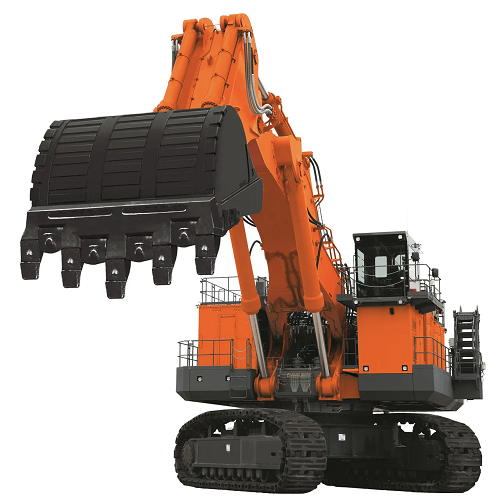A roundup of the latest excavator innovations enhancing the performance of a staple piece of construction and mining machinery
When selecting an excavator for construction and engineering projects on the continent, it is paramount to pick a machine that will be able to get the job done, do so efficiently, and at the right price. While, due to the relentless effort given by talented engineers, in today’s world most machines arriving on the market are more than capable to meet these requirements, there remains space for improvement and manufacturers remain steadfast in their pursuit of maximising excavator performance.
Recently, Goscor Earthmoving Equipment outlined why the SANY range of 20-ton excavators represent some of the most powerful and durable machines on the market. The SANY SY210C and the SANY SY215C models, with operating weights of around 20,000 kg, are designed for a range of construction and excavation tasks.
Specifications of the machines include bucket capacity ranging from 0.9-1.2 cu/m, a maximum digging depth range from 5.9-6.5 m, and a boom and arm length from 5.5-6.5 m. Powered by a Cummins or Isuzu engine, which provide high power and torque for efficient digging and loading operations, they benefit from advanced fuel injection technology, ensuring fuel efficiency, reduced emissions and minimal noise pollution. Furthermore, the excavators are designed with easy access to key components for maintenance while the operator’s cab has been delivered complete with air conditioning, adjustable seats and a high-resolution display screen.
Goscor has highlighted their pride in distributing these machines to their customers and recognises SANY as a strong choice for those prioritising comfort, safety and high-performance. Indeed, the excavators that the brand continues to make available put it as a reliable and efficient choice for those in need of such a machine.
Hitachi strengthens offering 
Looking to enhance the durability of its machinery, Hitachi Construction Machinery has announced the development of an enhanced boom and arm for its range of ultra-large hydraulic excavators.
According to the company, the durability has been improved by expanding the applicability of steel castings to the boom and arm connecting part and is applicable to backhoe front excavators. Serviceability has also been improved by equipping the boom with an access hole that can be opened and closed with a bolt for easier inspection and welding strength and part of the thickness of the boom and arm has also been reinforced. This results in reduced repair downtime of the equipment, lower maintenance costs and an extension of the service life by up to 1.5 times compared to previous models.
The newly designed boom and arm will be applied as standard equipment to the EX5600-7 backhoe excavator from March 2025 before being expanded to other applicable models. In the meantime, tests will be carried out from August 2023 under actual operation loads at Rio Tinto iron ore mine in Australia.
The initiative is partly being driven by the company’s ambition to minimise its impact on the climate. Hitachi has noted that the difficulty of remanufacturing the booms and arms of ultralarge hydraulic excavators and the need to repair cracks when they have materialised has caused bottleneck in reducing CO2 emissions and extending the service life of machines. With the improvement to durability, this bottleneck should be eliminated at no expense to operating performance.
A new Komatsu concept
In a demonstration of its own commitment to minimising the environmental impression of its business – for which it is targeting a 50% reduction in CO2 emissions from use of its products and production by 2030 – Komatsu has development a new concept medium-sized hydraulic excavator.
The model is unique in that it combines a hydrogen fuel cell and Komatsu-developed key components to achieve carbon neutrality at construction sites. The company is advancing proof of concept tests started in May 2023 in an attempt to accelerate its efforts to embark on the commercial production of medium-sized and large construction equipment powered by hydrogen fuel cells in the near future.
For the new concept machine, Komatsu adopted a hydrogen fuel cell system and hydrogen tank, which were produced by Toyota Motor Corporation, on Komatsu's medium-sized hydraulic excavator. In addition to Komatsu's comprehensive control technology, the combination of Toyota’s hydrogen fuel cell system and Komatsu key components, Komatsu is working towards zero exhaust emissions and a significant reduction in noise and vibration, while delivering the same digging performance and high operability as engine-driven excavators.
While it may be some time before the Komatsu hydrogen-powered excavator becomes a familiar sight, it does provide an insight into the kind of machines that may be making their mark across the continent in years to come.
According to sector consultants from abcg the race to electrify and decarbonise construction equipment is just the first step in a longer campaign to redefine how machines are designed, look, and operate. Read the full piece here: https://www.africanreview.com/construction-a-mining/machinery/rethinking-construction-machinery



